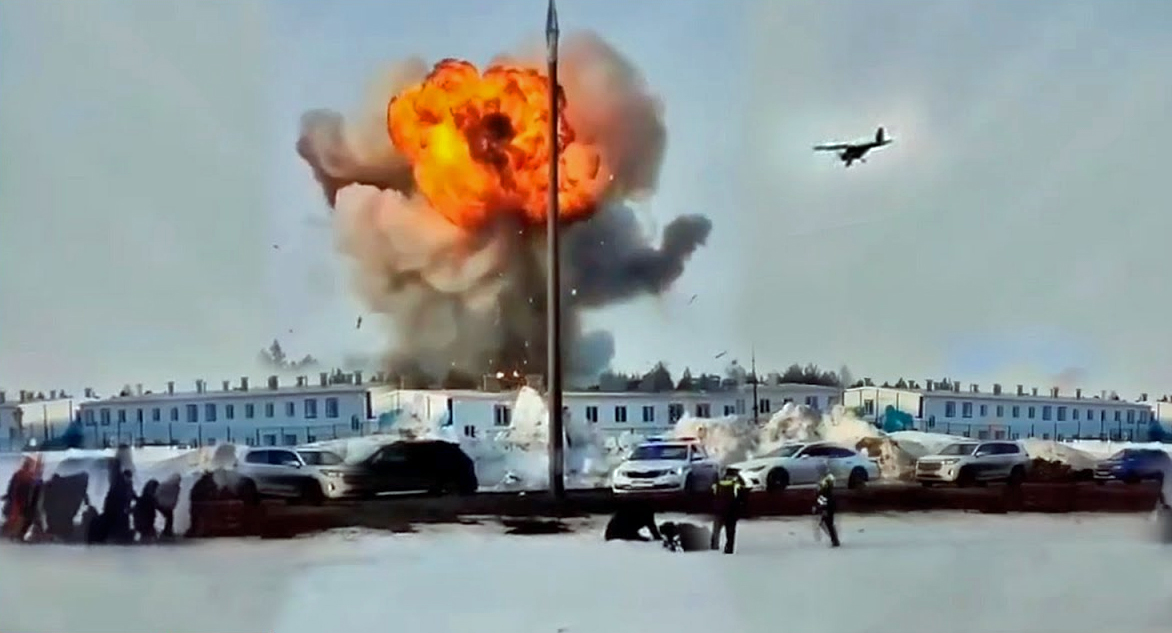Russia says it has fired a new type of intercontinental ballistic missile at the Ukrainian city of Dnipro. President Putin explained in a video address that the Oreshnik missile was launched from the Russian region of Astrakhan on the Caspian Sea in response to attacks against Russia with Western missiles. It was not carrying nuclear warheads although these missiles are nuclear-capable, he added. Commentators take stock.
Another threshold crossed
JOIN US ON TELEGRAM
Follow our coverage of the war on the @Kyivpost_official.
The UK’s Economist explains the significance of the operation:
“Russia has fired huge numbers of ballistic missiles at Ukraine in the past, many of them nuclear-capable, such as the Kinzhal. But Oreshnik is different. It was originally classified by both America and Russia as an ICBM. Even if it is one notch down in its range, such land-based intermediate-range ballistic missiles are complex and expensive weapons that are still almost always associated with nuclear payloads. ... Oreshnik is the first-ever intermediate-range missile with multiple warheads to be fired in combat. It may not be the last.”
Mind games
For Valery Chaly, Ukraine's former ambassador to the United States, the move is a clear case of blackmail by Russia:
“There's no need to panic! Little has changed for Ukraine. Strikes by missiles that could potentially carry nuclear warheads have already been carried out, also over long distances (for example with the Kh-55 cruise missiles and its modifications, even with dummy nuclear warheads). ... This is not a signal to Ukraine. It is a Russian attempt to step up its nuclear blackmail against Europe and provoke a corresponding reaction from the allies in the US in order to stir up fears of a third world war. This is essentially a psychological operation.”

North Korean Troops Face Major Losses in Kursk: The Cost of Russia’s Desperation
Do not let this go unpunished
Poland’s Polityka calls for a decisive response:
“The West has arguments on its side and should demonstrate them. A missile test, exercises with simulated nuclear weapons, a nuclear submarine turning up off the coast of Russia should suffice as a response in the escalation dialogue. It would also be possible to respond in a different language - in cyberspace or outer space - with no less tangible consequences. Economic pressure and diplomacy are also tried and tested means. Putin should not be allowed to get away with firing ballistic missiles at a defenceless country with impunity.”
Just a couple more steps to nuclear war
Russia’s opposition politician Lev Shlosberg warns about the next steps in the conflict in a Telegram post published by Echo:
“Escalation cannot be endless. Each side has an initial known number of options which will be gradually exhausted. The result of the escalation can either be a move away from the abyss or the breaking of barriers. So far, events have followed the second pattern. There is not much time left until the end, because on both sides the ammunition for escalation is almost exhausted. Two or three more steps and each side will be ready to launch nuclear weapons. Perhaps not initially in the form of a military strike but as a test, but then the barrier against nuclear attacks will have been broken. After that, there can only be global war.”
Vows that are quickly forgotten
Belgium’s De Standaard also warns of the looming spiral of escalation that US deliveries of landmines to Ukraine portends, and points to international treaties against deployments:
“The conflict highlights how quickly costly vows are forgotten and barbarism takes over. Comparisons with WWI are becoming increasingly accurate, with an almost static front line where soldiers slaughter each other in trenches. A human life, especially on the Russian side, is worth nothing anymore. What comes next? Soon we must fear that a belligerent country will resort to using nerve gas. That's even cheaper.
Reprinted from Eurotopics. See the original here
You can also highlight the text and press Ctrl + Enter






